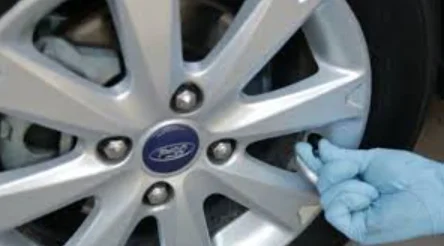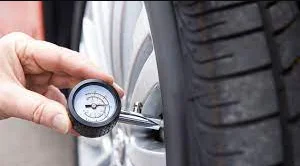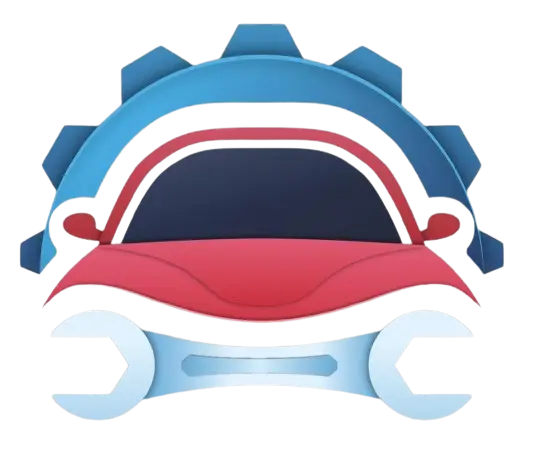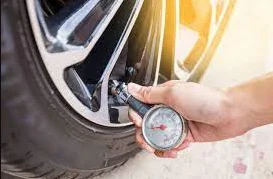Cruising down the road in your Ford Fiesta 2010 should be a symphony of smooth suspension and purring engine, not a cacophony of bumps and rattles.
Unfortunately, underinflated or overinflated tires can turn even the smoothest asphalt into a washboard.
But fear not, fellow Fiesta fans! Finding the perfect tire pressure is easier than you think, and it unlocks a treasure chest of benefits.
Why Tire Pressure Matters
Proper pressure isn’t just about a luxurious ride. It’s an investment in safety, fuel efficiency, and tire longevity. Underinflated tires wear unevenly, leading to premature replacements and potentially dangerous blowouts.

Conversely, overinflated tires make for a rough ride, reduce traction, and can even damage your rims. It’s a win-win scenario: the right pressure keeps you safe, saves you money, and makes your Fiesta feel like a dream on wheels.
Finding Your Fiesta’s Sweet Spot
No need for cryptic readings or guesswork! The magic number for your 2010 Fiesta tires is printed right on a sticker inside the driver’s door jamb or in your trusty owner’s manual. It’s usually within the range of 32-35 PSI (pounds per square inch).
Table of Ford Fiesta 2010 Tire Pressure
| Tire Size | Normal Load | Full Load | ||
| Front | Rear | Front | Rear | |
| bar (psi) | bar (psi) | bar (psi) | bar (psi) | |
| 195/60R15. | 2.3 (33) | 1.8 (26) | 2.8 (41) | 2.8 (41) |
| 195/60R15 ECO. | 2.3 (33) | 2 (29) | 2.8 (41) | 2.8 (41) |
| 195/55R16. | 2.3 (33) | 1.8 (26) | 2.3 (33) | 2.6 (38) |
| 205/45R17. | 2.3 (33) | 1.8 (26) | 2.3 (33) | 2.6 (38) |
| 205/40R18. | 2.3 (33) | 1.8 (26) | 2.6 (38) | 2.8 (41) |
Remember, this is the recommended cold pressure, meaning before you’ve driven a mile. Tires naturally heat up and gain a few PSI on the road, so don’t overinflate based on a hot tire reading.
Pumping Up for Smooth Sailing
Now, let’s put theory into practice! Grab a tire pressure gauge (digital ones are user-friendly!) and head to a gas station with an air compressor.

Here’s your roadmap to tire bliss:
- Check each tire, including the spare! Note the pressure and compare it to the recommended amount.
- For underinflated tires, add air in short bursts, checking the pressure after each burst. Don’t exceed the recommended PSI.
- For overinflated tires, gently press the valve stem to release air until you reach the correct pressure.
- Repeat for all tires and enjoy the symphony of a perfectly inflated Fiesta!
Bonus Tips for Tire Nirvana
- Regular checkups are key! Aim to check your tire pressure at least once a month and before long trips.
- Seasonal adjustments. Tires lose pressure in colder weather, so you might need to add a few PSI in winter.
- Don’t forget the spare! A flat spare is a recipe for a bumpy adventure.
Conclusion
Maintaining the perfect tire pressure isn’t just about pampering your Fiesta. It’s a smart investment in your safety, your wallet, and your driving experience.
With the right pressure, you’ll unlock a smoother ride, better fuel economy, and longer tire life. So grab your gauge, pump up your tires, and hit the road with confidence in your perfectly inflated Fiesta!
FAQs
Q: What happens if I don’t check my tire pressure regularly?
Underinflated or overinflated tires can lead to premature tire wear, decreased fuel efficiency, reduced traction, and potentially dangerous blowouts. Regularly checking your tire pressure can prevent these issues and ensure a safe and enjoyable driving experience.
Q: Can I use a tire pressure gauge from another car?
Most tire pressure gauges are universal, but it’s important to double-check the markings on the gauge to ensure it measures in PSI (pounds per square inch).
Q: What should I do if my tire pressure is significantly low?
If your tire pressure is significantly low, it’s best to avoid driving and have the tire inflated by a professional. Driving with a very low tire pressure can damage the tire and increase the risk of a blowout.
Q: Can I over inflate my tires for better fuel economy?
No, overinflating your tires can actually decrease fuel economy and decrease traction. Always stick to the recommended tire pressure for your vehicle.

